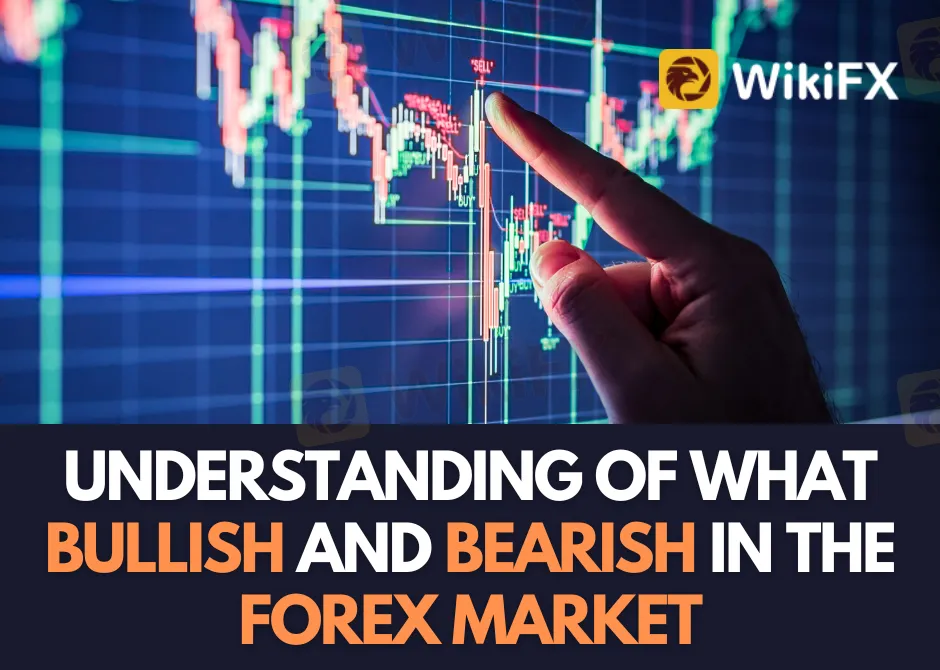简体中文
繁體中文
English
Pусский
日本語
ภาษาไทย
Tiếng Việt
Bahasa Indonesia
Español
हिन्दी
Filippiiniläinen
Français
Deutsch
Português
Türkçe
한국어
العربية
Understanding Of What Bullish And Bearish In the Forex Market
Abstract:Bulls and bears are words often used in financial markets to characterize market price fluctuations and overall market sentiment. This terminology first arose on stock exchanges but swiftly spread to most financial markets, including Forex

One of the most important advantages of forex trading is the potential it provides traders in both bull and down markets. Bull and bear markets are crucial to monitor because they help predict current market movements. In this essay, we will define bear and bull markets and examine how to distinguish between the two market scenarios.
What Is the Difference Between a Bull and a Bear Market?
Bear and bull markets are words used to describe the basic trend of markets. Simply explained, a bear market is one in which prices are falling, while a bull market is one in which prices are increasing.
In a bull market, prices increase, and investors are bullish because they expect prices to climb further as a result of the bullish market, and they anticipate selling high in the future. A bull trader initiates long positions, boosting demand and driving up the price of a trading asset.
In a bear market, prices decrease, and investors become pessimistic because they expect prices to fall more as a result of the bearish market, and they anticipate purchasing cheaply in the future. Bears sell their assets in order to purchase them at a lower price in the future.
1. Investors are hopeful in a bull market.
2. The economy is growing.
3. Positive asset class returns
4. Increased market confidence
5. Beneficial to the economy
1. Investors are gloomy during a down market.
2. The economy is shrinking.
3. Negative asset class returns
4. Lack of market confidence
5. Negative for the economy
What Is the Difference Between a Bull and a Bear Market?
1. The economic and commercial circumstances described by them
The primary distinction is that bull markets depict conditions in which asset values rise, while bear markets describe situations in which asset prices fall. In other words, a bullish condition suggests good market momentum, whilst a bearish state shows negative market momentum.
2. Market influencing factors
A healthy economy with high GDP, low unemployment, inflation under control, good market mood, active purchasing, and confidence that economic development is sustainable are all factors that contribute to a bull market.
Factors contributing to a bear market include the country's economy displaying symptoms of weakness with low GDP, high unemployment, rising inflation, negative market mood, aggressive selling, and a loss of trust in the economy and stock prices.
3. Investor behavior in both scenarios
During bull markets, investors are more confident in their profits and take a more relaxed attitude. They are more engaged and ready to invest in higher-risk assets. This is because the economic conditions are good, and lost capital may be recovered more quickly.
However, during bad markets, investors are less confident in profit prospects and tend to be less active. One of the primary causes for this is heightened market volatility and unpredictability.
How to Spot a Bullish or Bearish Market
As a trader, you must assess whether the market is in a bear or bull market when it occurs. Aside from the drop or increase in asset prices, there are a number of additional signs that may help you determine if the market is in a bull or bear market.
1. Keep up with the newest financial news.
The news and journals are useful sources for understanding market and trading behavior. Many interviews with traders and experts appear in these publications. You may also read numerous financial periodicals in addition to this. Reading the news on a daily basis will not assist; after reading, you must connect the dots in order to make a lucrative choice. There are other newsletters that give information on the trading emotions of market participants.
2. Make use of technical analysis tools
When markets are shifting from Bulls to Bears, forex traders may use a variety of technical analysis methods to evaluate market emotion and predict currency action.
Price charts and the Moving Average are the two most often used technical analysis techniques for detecting Bull and Bear markets (MA)
Some traders employ quantitative and statistical information, as well as price activity, while others compare negative and positive advice from various newsletters. These instruments' absolute data change over time might indicate to traders where the market will go in the future.
3. Relative Strength Index and Oscillators
The oscillator is one of the best forms of technical indicators for measuring bearish and bullish momentum indirectly. It contains all of the information needed to comprehend how traders feel about the financial market.
The Relative Strength Index, or RSI, is another technical indicator. It compares the number of assets sold to the number of assets purchased. The goal is to assess whether capital is moving out of or into an asset. It also allows traders to learn how investors feel about the market without having to question each trader individually.
Conclusion
Bull and bear markets are crucial to monitor because they help predict current market movements. Being aware of market patterns may help you make better judgments about risk management and develop a better knowledge of when to enter and exit transactions.
To summarize, market players' attitude is heavily influenced by exchange rate dynamics. When a negative trend is detected, traders begin aggressively selling, and prices decrease. When the bullish trend turns negative, traders begin buying in order to resell at a higher price.
Stay tuned for more Forex Educational articles
Download the WikiFX App from the App Store or Google Play Store to stay updated on the latest news.

Disclaimer:
The views in this article only represent the author's personal views, and do not constitute investment advice on this platform. This platform does not guarantee the accuracy, completeness and timeliness of the information in the article, and will not be liable for any loss caused by the use of or reliance on the information in the article.
Read more

Inzo Broker Review 2025: Is It Legit or a High-Risk Gamble?
When you ask, "Is inzo broker legit?" you want a clear, straight answer before putting your money at risk. The truth about Inzo Broker is complicated. Finding out if it's legitimate means looking carefully at its rules, trading setup, and most importantly, the real experiences of traders who have used it. The broker shows a mixed picture - it has official paperwork from an offshore regulator, but it also has many user warnings about how it operates. This review gives you a fair and fact-based investigation. We will break down all the information we can find, from company records to serious user complaints, so you can make your own clear decision.

INZO Broker No Deposit Bonus: A 2025 Deep Dive into Its Offers and Risks
Traders looking for an "inzo broker no deposit bonus" should understand an important difference. While this term is popular, our research shows that the broker's current promotions focus on a $30 welcome bonus and a 30% deposit bonus, rather than a true no-deposit offer. A no-deposit bonus usually gives trading funds without requiring any capital from the client first. In contrast, welcome and deposit bonuses often have rules tied to funding an account or meeting specific trading amounts before profits can be taken out. This article gives a complete, balanced look at INZO's bonus structure, how it operates, and the major risks shown by real trader experiences. Read on!

Uniglobe Markets Review 2025: A Complete Guide to an Unregulated Broker
Uniglobe Markets claims to be an online trading company that offers many different types of investments, including foreign currency and raw materials. The company tries to attract traders by offering high leverage, different account options, and popular MetaTrader trading software. However, there is one major problem: the company does not have proper regulatory oversight. This creates serious concerns about the safety of clients’ capital and whether the company operates honestly. Read on to learn more about its regulatory status.

Pocket Option Scam Alert: Unable to Withdraw Funds
Pocket Option Scam Alert: Not regulated claims, suspicious license score, and platform-only trading risks summarized.
WikiFX Broker
Latest News
Is Fyntura a Regulated Broker? A Complete 2025 Broker Review
Zetradex Exposed: Withdrawal Denials, Account Freeze & Bonus Issues Hurt Traders
Is Forex Zone Trading Regulated and Licensed?
PINAKINE Broker India Review 2025: A Complete Guide to Safety and Services
Exness Restricted Countries List 2025 Explained
Is Uniglobe Markets Legit? A 2025 Simple Guide to Its Safety, Services, and User Warnings
Is Inzo Broker Safe or a Scam? An Evidence-Based Analysis for Traders
WikiEXPO Dubai 2025 “Welcome Party” Kicks Off Tonight!
He Trusted a WhatsApp Group and Lost RM659,000
Moomoo Singapore Opens Investor Boutiques to Strengthen Community
Currency Calculator




